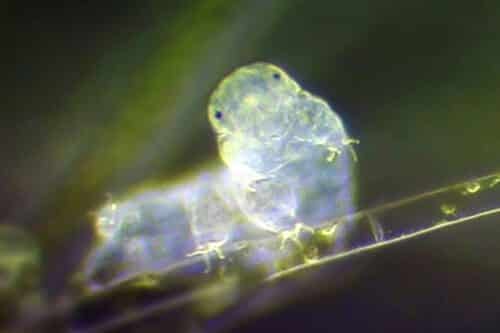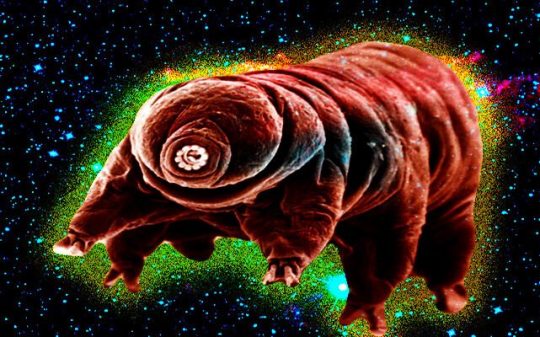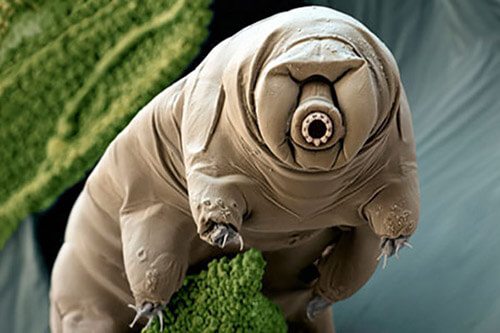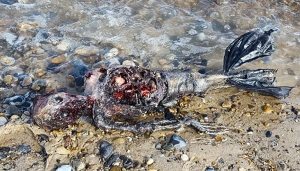Did you know that the toughest animal found on Earth is capable of withstanding the harshest conditions on the planet, as well as surviving in outer space? This sturdy little bugger is called ‘The Water Bear’ or Tardigrade, and it has fascinated scientists for over 200 years, although breakthrough discoveries at the molecular level of this creature are only now being unveiled, and the results are literally out of this world.
According to a research paper published in the Proceedings of the national Academy of Sciences, the eight-legged microscopic invertebrates possess genomes that are one-sixth alien, meaning that they obtain a big portion of their DNA from other creatures.
Now that technology allows us look even further, a team of researchers arranged the genome of a water bear species ‘Hypsibius dujardini’ to better comprehend how these animals can outstand the most extremes conditions. The results showed that this particular species of tardigrades, who can survive over 10 years without any food or water, has collected about 6,000 alien genes throughout its history through a process known as horizontal gene transfer, in which genetic material is acquired from other organisms instead of being hereditary transmitted from the parents. Most of the foreign genes come from bacteria, plants, fungi and Archaea.
In a statement for IFLScience, lead author of the study – Professor Thomas Boothby from the University of North Carolina – offered more details on the topic:
On a broader scientific scale, this shows us the animal genome can be composed of a much higher proportion of foreign genes than was originally thought possible, or probable. It also shows we should think of the ‘tree of life’ as a ‘web of life,’ where you have disparate organisms contributing genetic material to distantly related organisms, not just direct ancestors.
We had no idea that an animal genome could be composed of so much foreign DNA. We knew many animals acquire foreign genes, but we had no idea that it happens to this degree, added Bob Goldstein, co-author of the study.
https://www.youtube.com/watch?v=QKf_Q23VV4k
But how is it that the water bears receive alien DNA? Well, since the tardigrades can dry out entirely in drought conditions, its DNA divides into fragments, and the cell membrane becomes temporarily punctured as it rehydrates. According to Boothby, this process allows big molecules such as proteins and fragments of foreign DNA to run through the cell, leaving the fragmented DNA to heal itself with the newly acquired bits embedded within.

On the other side of the coin, a team of scientists at the University of Edinburgh are trying to debunk the above mentioned study. After running a series of similar tests, they concluded that only about 500 genes were received from other species. As reported by The Atlantic:
They found very few horizontally transferred genes – as few as 36, and just 500 at the very most. They concluded that their rivals had sequenced DNA from bacteria that were living alongside the tardigrades and, despite their best efforts, had mistaken the genes of those microbes for genuine tardigrade genes.
They ended up with around 500 genes that potentially came from microbes, and they still think that the most of these are from contaminants that they haven’t been able to sort through yet. They only have strong evidence for 36 genes being horizontally transferred from bacteria, which is within the common range for animal genomes.
Regardless of which theory proves to be true, the water bear remains the toughest animal known to modern science, and by closely inspecting its ability to adapt and survive, we can surely draw some conclusions on our own. If leading scientists cannot come to a mutual understanding, it might be because our technological means are yet to evolve in order to precisely show the number of alien genes, but judging by its otherworldly features, the answers might already lie in front of us.











Trackbacks/Pingbacks